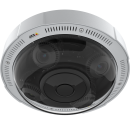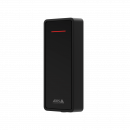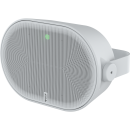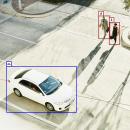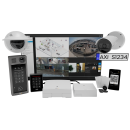
Protect people and property
Safety and security

Understand risk – and act
In busy healthcare environments, network solutions are a powerful way to manage risks in real time, as well as to improve long-term safety and security. When unexpected situations arise, network cameras with intelligent analytics can alert the right people for a rapid and informed response. Throughout your facility, whether in parking areas or on staff uniforms, cameras serve as a visible deterrent to aggressive or unwanted behavior. In addition, reviewing recorded material and logged events offers important insight you can use to improve future safety through staff training or revised policies and procedures.
Focus areas

Respond in real time
An Axis network solution is a cost-effective way to mitigate unexpected safety and security incidents – from anywhere. Emergency call stations in parking areas and near entrances ensure quick access to a dispatcher in the event of a medical emergency or other urgent situation. Audio-equipped cameras or network speakers with audio-based analytics enable the detection of aggression, breaking glass, and more. In addition to alerting security or de-escalation teams, the system can also support safe evacuations when necessary. Network audio and video enable you to visually monitor evacuation progress and provide real-time instructions.

Stay a step ahead
Network solutions can also defuse developing situations. For example, during patient surges in the ER, network solutions keep you alert to signs of aggression in the crowd, so security, law enforcement, or de-escalation teams can swiftly issue voice messages or deploy a team to the scene. In restricted or low-traffic areas, cameras with loitering analytics pair with network speakers or strobe sirens to detect and warn off suspicious individuals. Additionally, visible cameras – for example, at drug distribution areas or worn by the healthcare providers and other staff – positively influence the actions of both wearers and the public.

Build a safer future
Because logged events and recorded footage enable you to see where certain types of incidents are likely to occur, they also support smart interventions that protect patients, visitors, staff and property over the long term. For example, first-person footage from a wearable camera can be used in de-escalation trainings, while the overview of an evacuation provides the information you need to review and revise policies and procedures. Additionally, such footage offers insights on where you need to redirect traffic or add wrong-way detection analytics, strengthen access control, increase security staff, and more.
Recommended technology

Body worn solutions

Sound detection
Related sub areas

Quality care

